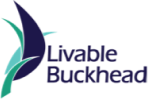Buckhead’s Vision
In 2011, Livable Buckhead, a 501c3 nonprofit organization, was founded with a sustainability-focused mission aimed at building existing upon commute alternative programs, taking responsibility for the implementation of an enormous greenspace mission, enhancing quality of life and developing and launching environmentally responsible programs and projects in the community.
The transformation of Buckhead began more than fifteen years ago, with release of the Buckhead Action Plan, a Livable Centers Initiative (LCI) plan. The plan set in motion a framework for collaboration and a series of improvements to connect area parks, trails, schools, and neighborhoods to Buckhead’s central core and transit. Today’s residents, employees and visitors are discovering how connectivity and mobility options are enhancing quality of life.
State of Buckhead Survey
In 2020 and 2022, Livable Buckhead surveyed people who live and work here to find out what they like about Buckhead and what they think needs to be improved. What did we learn? The majority of people survey think that Buckhead is a great place to live, work and visit. People are drawn to this area for shopping and dining, and they love to live here because we have good schools and good jobs, as well as easy access to many areas of the city. However, the survey also confirmed that people are very concerned about crime.
These and other findings from the survey will help Livable Buckhead and its partnering organizations — the Buckhead Coalition, Buckhead Community Improvement District and the Buckhead Business Association – refine our programs and prioritize our work in the coming years. Thank you to everyone who participated and took time to share their perspective on living and working in Buckhead.
Buckhead Employer Assisted Housing Study
Livable Buckhead’s 2018 Buckhead Housing and Commute Study found that there was a mismatch between Buckhead’s growing jobs and available housing—which affected livability and affordability of Buckhead. These trends have only amplified since the pandemic.
• Only 7% of workers in the Buckhead commercial core live in the neighborhood.
• For workers making less than $40,000, only 4% live in the neighborhood.
• While some knowledge workers have moved to flexible work schedules, service sector employees continue to drive long distances to jobs in Buckhead.
Employer assisted housing (EAH) programs are methods employers can use to reduce their employee’s housing costs. Employers typically help their employees afford housing closer to their workplace. Assistance may be provided to defray ownership or rental costs, through loans, grants, monthly subsidies, or lease. Programs may either expand housing supply, subsidize housing costs, or increase housing accessibility with services. EAH Programs are used by employers to increase retention and create a competitive advantage. Programs are often limited to public employees, a single employer, or a single occupation.
To determine the feasibility of an EAH program, HR&A and Livable Buckhead completed 18 interviews—with a mix of public, private, and nonprofit firms with a presence in Buckhead and the greater Atlanta region.
Buckhead Housing and Commute Study
The Buckhead Housing and Commute Study on Buckhead housing shows that increasing the number of workers who also live in the community could have a positive impact on local traffic. While only eight percent of the workforce – roughly 6,100 people — currently lives in Buckhead, the study proposes an action plan to almost triple that number and eliminate up to 300,000 miles of commute travel each day.
The action plan includes a combination of short, mid and long-term approaches that will connect workers to existing housing, preserve housing affordability and eventually lead to construction of new workforce housing. The study also included a market analysis to determine how many Buckhead workers would consider living in the community and how much housing is needed to accommodate them. The analysis identified demand for approximately 12,000 new units, split evenly between market rate options that appeal to high income households and units that are affordable for households making $50,000 or less annually. Proposed programs to meet that goal include attracting non-profit investment in workforce housing, promoting co-living and micro-units, and developing housing incentive programs.
Buckhead REdeFINED
Buckhead’s Master Plan
In 2016-2017, Livable Buckhead brought together the five major civic organizations in Buckhead (Livable Buckhead, Buckhead CID, Buckhead Coalition, Buckhead Business Association and Buckhead Rotary) to develop a collective vision for the community’s future. This vision, dubbed “Buckhead REdeFINED,” identified Mobility, Vitality and Livability as the three key themes guiding Buckhead’s future.
The recommendations included in the plan range from the creation of a public space framework, to street activation, to public art installation, to pedestrian and bicycle connectivity, to transit expansion to diversification of housing opportunities. This master plan also identified the need for the development of a comprehensive sustainability strategy.
Buckhead Sustainability Action Plan
Buckhead is uniquely situated to drive and demonstrate first-in-class sustainable innovation given its identity as a dynamic and successful business hub, its residential demographics, and its expected growth in population and development. Livable Buckhead’s strategic sustainability plan employs the three-pillar approach often associated with the triple bottom-line: environmental sustainability, economic sustainability, and social sustainability which showcases why sustainable development is critical to the long-term success of Buckhead across eight elements of sustainability: culture of sustainability, energy, water, waste, health & wellness, mobility, greenspace, and arts & culture.
Buckhead Collection
In October of 2010, working at the request of City Councilman, Howard Shook, the Buckhead Community decided it was time to take green space seriously and began to develop a vision for the commercial core of Buckhead and its adjacent neighborhoods. That vision, The Buckhead Collection, is complete and has become the responsibility of Livable Buckhead to implement.
The Buckhead Collection is an interconnected network of parks, trails and green spaces serving the social, economic, mobility and environmental needs of Buckhead residents, workers and visitors. The Buckhead Collection is comprised of seven subsystems, each having its own individual plan. Click on each element to download the vision for it.
Piedmont Area Transportation Study
The Piedmont Area Transportation Study is the result of a one-year community planning effort sponsored by the Buckhead Community Improvement District (CID) and the Buckhead Area Transportation Management Association (BATMA – predecessor to Livable Buckhead). The study calls for a 20-year, $200 million plan of action to transform the Piedmont Road Corridor from a traffic-choked liability into a transportation asset for Buckhead and the region.
The Piedmont Corridor identifies the key issues contributing to the traffic congestion on Piedmont Road. The Piedmont Area Transportation study employs “mobility balance” to address these issues, weaving together transit, pedestrian, bike and roadway improvements to improve access to Buckhead and to make it easier to move around within the community. The plan calls for many changes that could have a dramatic impact on your commute.
Infrastructure Improvements
The Buckhead Community Improvement District (BCID) was formed in 1999 and has funded projects and programs addressing transportation needs and other aspects of the public realm that have set the stage for Buckhead’s commercial core to be a more walkable, livable urban center.
The mission of the BCID is to create and maintain a more accessible and livable urban environment. We meet the challenges of growth by investing tax dollars collected from commercial property owners within the district, as well as other funds we leverage from outside the district, to make meaningful improvements in the transportation network and public realm that connect people and places.
Buckhead Development
From a relatively small bedroom community populated by local businesses, Buckhead has grown to become Atlanta’s premier business district, with approximately 20 million square feet of office space. The Buckhead commercial market is seeing office space the tightest since 2008. And while Buckhead has long been known as a place for fine dining, massive mansions and exciting night life, it is also blooming into the city’s defining leader in community sustainability.
Livable Buckhead convenes and sits on the Development Review Committee (DRC) for Special Public Interest (SPI) district’s 9 and 12. Learn more about the DRC’s work, find zoning codes and other development documents and sign up to receive meeting invitations / agendas.
In addition, Livable Buckhead archives all projects that have come before both SPI- and SPI-12 DRC’s since 2012. Explore the projects to see how Buckhead is changing.
Buckhead’s Master Interpretive History Plan
The Interpretative Mater Plan will guide Buckhead Heritage, Livable Buckhead and our partner organizations in integrating historic interpretation at sites throughout Buckhead’s green space system over the next 5 to 7 years. Having this cohesive plan as a foundation will ultimately make interpretative efforts throughout the community more effective. The interpretive program will ultimately bring significant benefits to the community and the visitor groups who interact with the interpretive program.
Why create an interpretive program? Interpretation tells the story of a place, conveying a fuller appreciation and understanding of its cultural landscape and its history. Rather than being based on academic structures, historic interpretation is generally presented in non-traditional ways outside of classrooms, within the cultural landscape of a place.
Buckhead Guidebook
The Buckhead Guidebook provides information on Tourism, Relocation, and Economic Development. The economic data reveals just how important Buckhead’s role is in supporting our Georgia economy, but the guidebook is invaluable in many other activities such as planning a vacation, assisting with relocations, or showing why so many decide to open new offices within our commercial core.
Discover the ‘did you know’ section which highlights facts about Buckhead that set our community apart.
The Buckhead Guidebook is a productive tool for students, parents, and millennials seeking information on our history (from early Native Americans to today’s impressive skyline), things to do, private and public educational institutions, entrepreneurial and incubator opportunities, and employment sector data.
Virtually explore the ‘Buckhead Community’. The Buckhead community encompasses many things including, workspace, outdoor recreation and adventure, greenspace, pets, public safety, architecture, playfulness, and smiles. From historic neighborhoods to a bustling commercial core, with shopping, dining, sightseeing, and first-class hotels.

